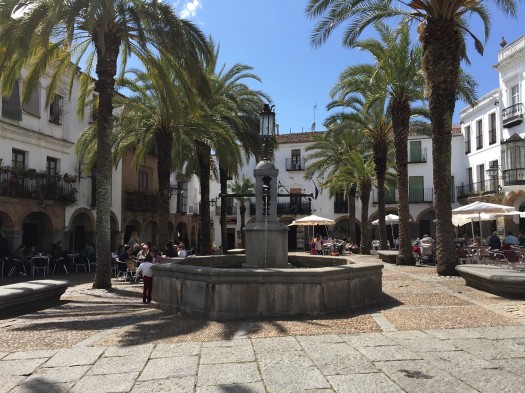Posts Tagged ‘smartcode’
The Plaza: What is required for a community living room?
Recent trips to Spain and Germany have me appreciating the nuances of three plazas I had the pleasure of experiencing. Each plaza was a different character and scale from the other, which if I had to sum up simply, I’d call Salamanca’s Plaza Mayor: A City Plaza, Berlin’s Gendarmenmarkt: A Civic Plaza, and Zafra’s Plaza…
Read MoreBerliner Kinder: Berlin and its playborhoods
You’ve heard my fellow Placeshaker, Scott Doyon, say Smart Growth = Smart Parenting. More than once, actually. As well as how living in a walkable neighbourhood may shape our children. I’ve also talked about how my winter city, Winnipeg, nurtures active kids, as well as put some of those ideas into a TEDxTalk. Last week,…
Read MoreMixing Light Industrial with Residential: The artisan’s delight
We’ve talked extensively here on PlaceShakers about how to integrate industrial uses into walkable neighborhoods. And the sorts of land use modifications, often via form-based codes, that are necessary to enable these uses within safe parameters. This week in Berlin, I was particularly inspired by the example set by Hackeschen Höfe, for mixing artisanal manufacturing…
Read MoreLondon’s Lived-In Look
It’s summertime, and that means another installment of lessons from great cities. Last summer, I shared some images and impressions from Montreal, Mont-Tremblant, and Ottawa. Over the next few weeks, look for updates from Berlin, Paris, and this week, it’s London calling. Before, I focused on elements in those great Canadian cities that have been…
Read MoreWays to Fail at Form-Based Codes 04: Don’t Capture the Character
The other day, I was riding my bike from a deeply walkable, bikeable neighbourhood to a more auto-dominated environment, and I was struck again by the tactile response when you’re walking or biking through this change. In the walkable neighbourhood, fellow cyclists were in the streets or in bike lanes, mixing safely with the traffic-calmed…
Read MoreWays to Fail at Form-Based Codes 03: Misapply the Transect (to the region rather than the neighborhood)
When it comes to misapplying — or, more commonly, overly simplifying — the Transect, we’re all guilty on some level. For instance, I often speak generally about its inherent rural-to-urban spectrum and how, as you move through it, the landscape changes its character. The highways and byways whisking you through the wilderness and countryside get…
Read MoreWays to Fail at Form-Based Codes 02: Make it Mandatory Citywide
A while back, we talked about Connections, Community, and the Science of Loneliness, and how our laws have separated not just building uses — residential, commercial, retail, civic — but have also separated people. And that separation has led to a spate of ills — ill health, ill economies, and ill environments. We looked at…
Read MoreCrowdsourcing = Data = Better Places
You know what the payment is for crowdsourcing? By asking other people to step up and think through solutions to some collective problem, I must commit to making a difference myself. Every time I’ve asked you to share information with me, you have. Then I feel the need to compile it, analyze it, and organize…
Read MoreForm-Based Codes? A picture’s worth a thousand words
If the attendees list of Placemaking@Work, my monthly webinar series, is any indicator, we’re increasingly united in our desire to improve the places we call home, wherever those places might be. Over time, I’ve had participants from Hawaii to Russia, from British Columbia to Saudi Arabia, and many points in between. The common thread among…
Read MoreThe Passion of Place
David Byrne noted in last Sunday’s NY Times that people get hooked on cycling because of pleasure, not health, money, or carbon footprint. “Emotional gratification trumps reason.” Ben Brown agrees, using Byrne’s “Stop Making Sense” as a blog title on the subject of community engagement and how special interest groups often talk past each other.…
Read More

